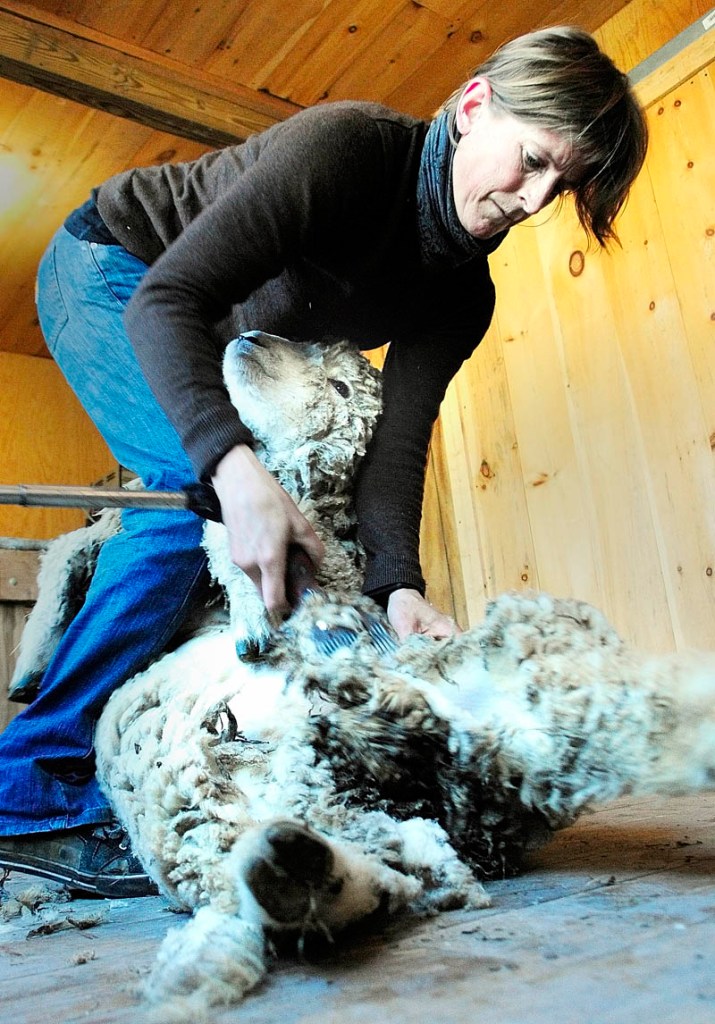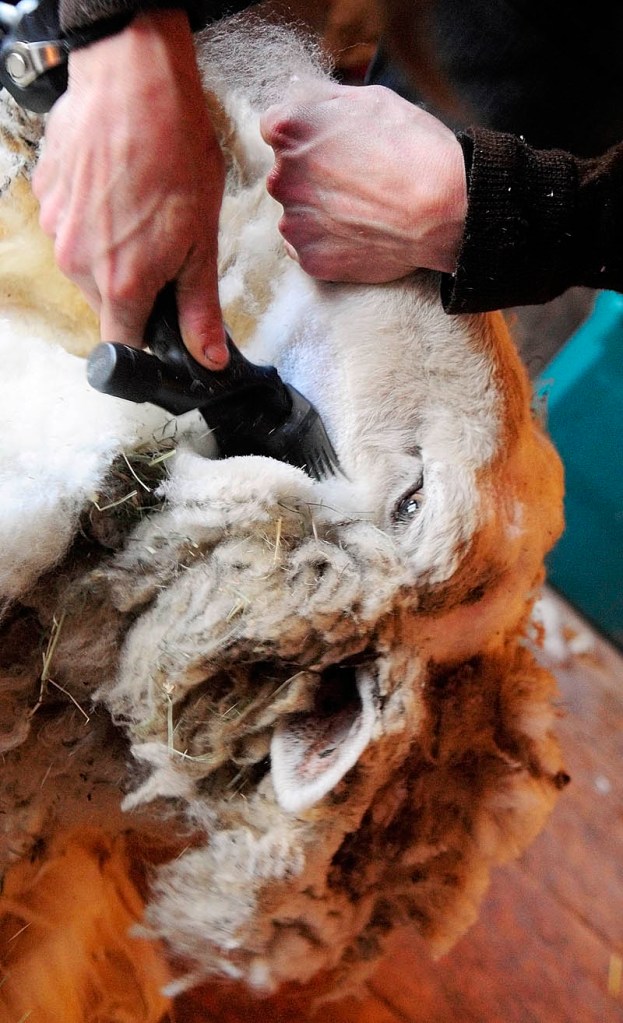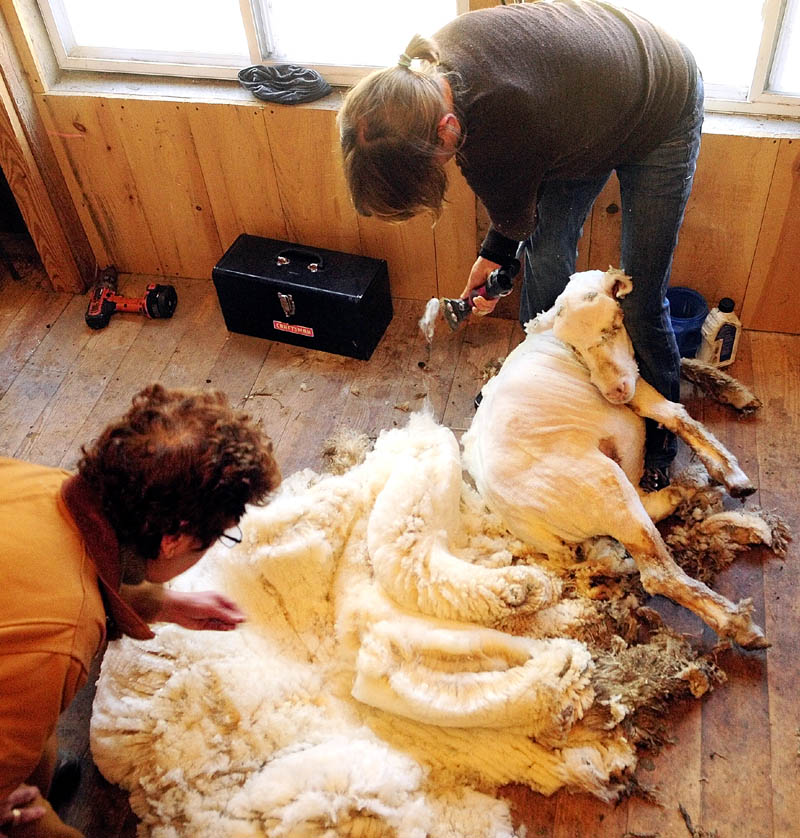AUGUSTA — The newly sheared sheep objected in the only way they could: a cacophony of “baas” as they gamboled around the small farmyard and felt the chill weather on their pinkish skin.
Their thick fleece, sometimes white and fluffy and sometimes black and matted, lay on a screen where Betty Stover picked out the bigger pieces of straw and dirt before packing it into bags labeled with the name of the sheep and the ear tag number.
“If they get cold, they’ll go in the barn,” she said.
Gwen Hinman, 37, had traveled from Acworth, N.H., Friday morning with all of her sheep-shearing equipment packed in the back of her pickup, including a wooden mounted sheep-shearing machine she screwed into a wall in Stover’s barn.
The shearing went well on Friday, and uncovered other sure signs of spring, as it became obvious which ewes were about to lamb.
Hazel was heavier than the others. Stover forecast twins and soon.
Hinman oiled the flexible joints of the pole, fired up the clippers and prepared to go to work on the 21 woolly sheep at Stover’s Spinnakees’ Farm on Tasker Road in Augusta.
“Who wants to come out first?” Stover asked, using a bucket of dark grain to entice the animals.
Zoolou, a mix of Romney and Olde English Babydoll Southdown sheep, was hungriest.
Stover and Rachel Soucy, a neighbor who keeps a ram, Bagaria, at Stover’s farm, stripped off the light cotton coat Zoolou had worn to protect his fleece from dirt.
Then Hinman turned on the clippers and took off some belly wool, then the entire fleece, revealing bright white wool under the surface gray.
The wool was 4 to 5 inches thick, perfect for spinning wool once it’s cleaned. And two commercial washers in the same shed stood ready to begin the multiple-washing process.
Hinman is in the area for four days, stopping at various farms in the area to shear the sheep. Sunday will be devoted to shearing a flock of 90, she said.
She’s been shearing for 12 years, and now does about 6,000 sheep a year. She spent several years shearing in New Zealand.
A slight woman, she’s strong enough to muscle the sheep, keeping their strong forelegs off the floor.
“If they feel they can’t get up, they won’t try,” she said, rotating them on their hips to keep the cutting going smoothly.
Stover has raised sheep for 10 years, but has had herds of goats and rabbits for longer.
All of the wool from her farm goes into product. She does not sell the fleeces. And she already has orders for some lambs.
Hinman is Stover’s preferred shearer. “If she makes a boo-boo, she apologizes to the sheep,” Stover said.
“How could you not care about these beautiful little things?” Hinman responded.
Betty Adams — 621-5631
badams@centralmaine.com
Send questions/comments to the editors.






